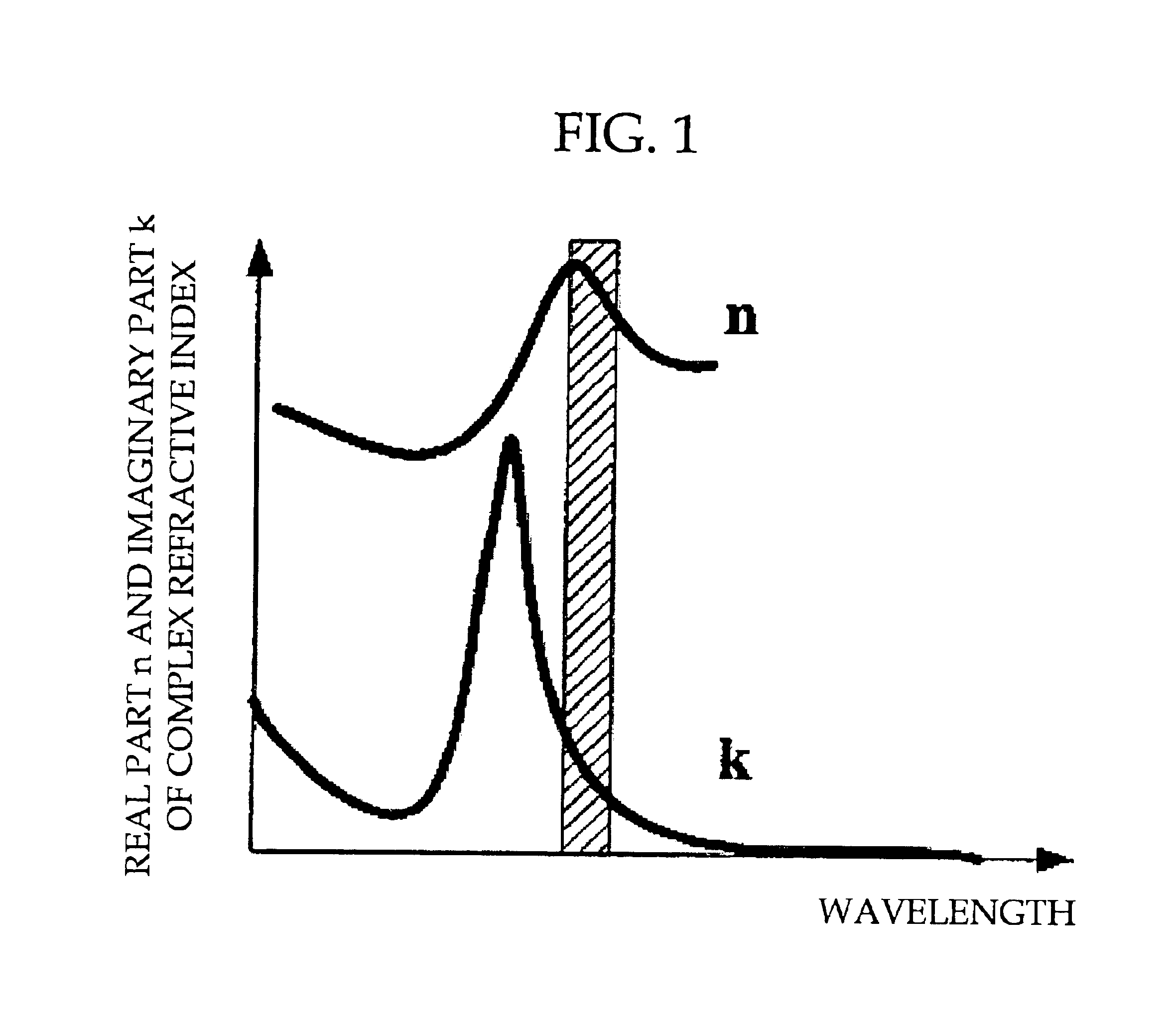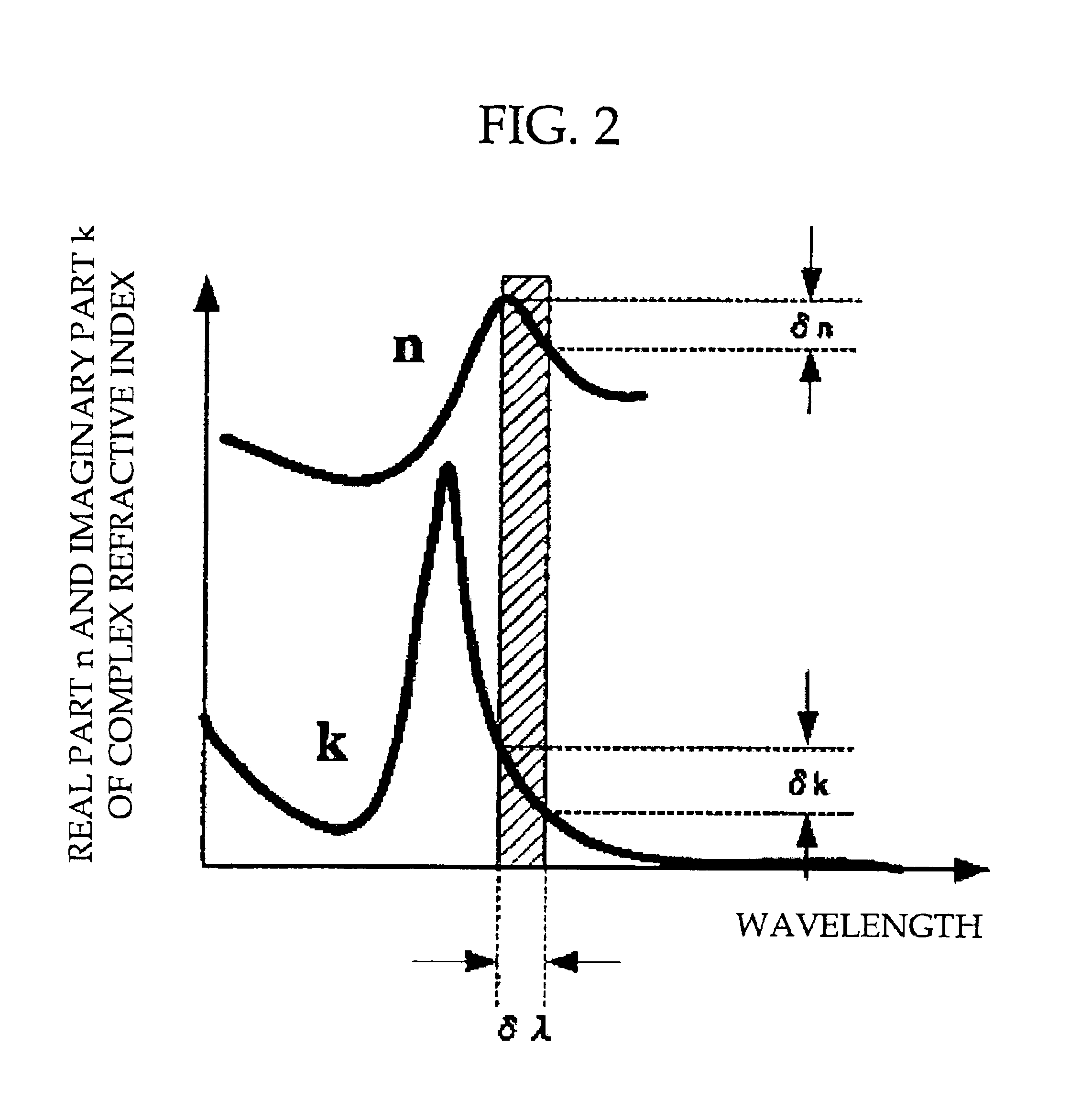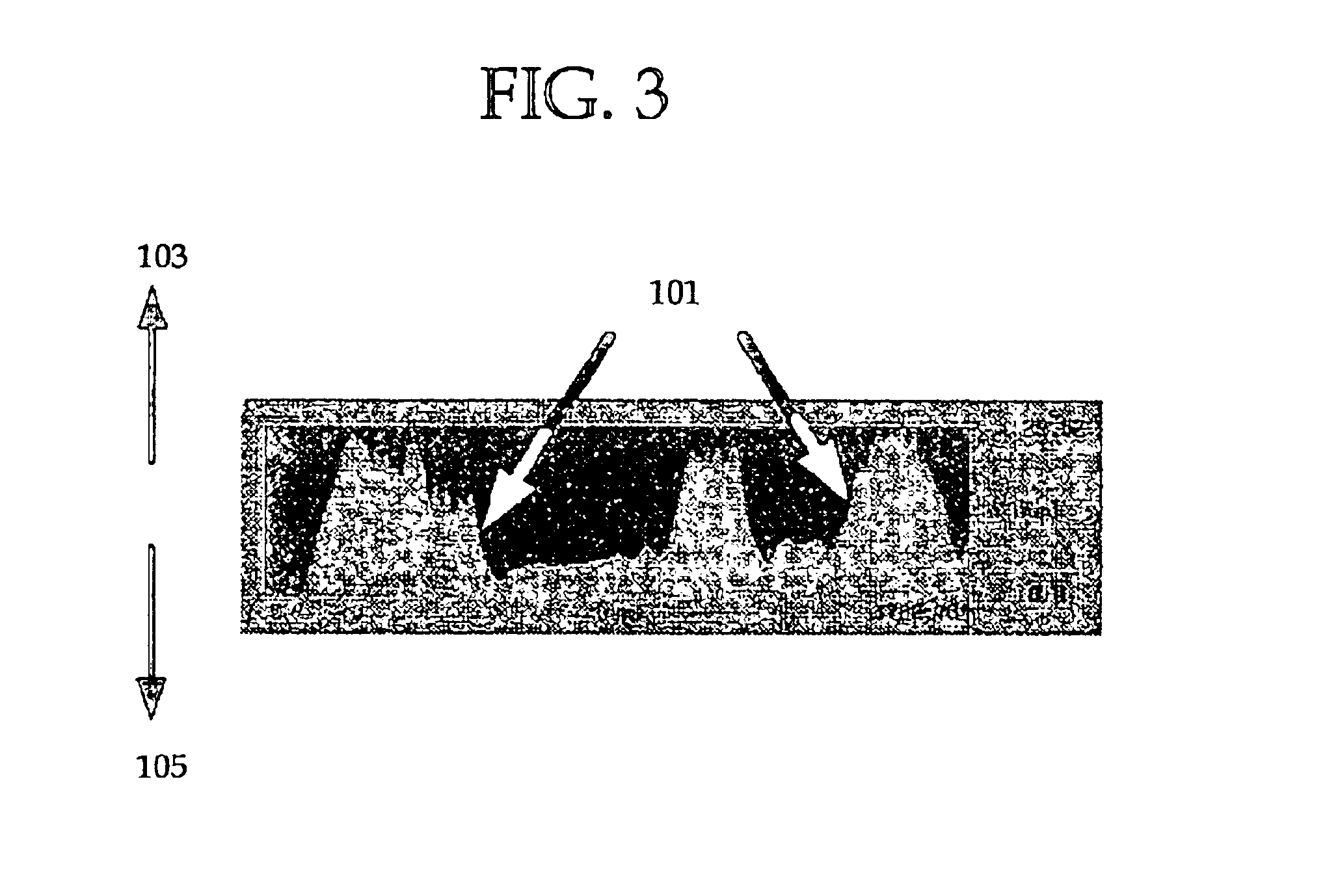Write-once-read-many optical recording media and process for recording and reproducing information on the media
a technology of optical recording media and write-once-read-many, which is applied in the field of write-once-read-many (worm) optical recording media to achieve the effect of easy recording and reproducing information and high quality
- Summary
- Abstract
- Description
- Claims
- Application Information
AI Technical Summary
Benefits of technology
Problems solved by technology
Method used
Image
Examples
example 1-1
[0365]A write-once-read-many optical recording medium according to the present invention was prepared by sequentially forming, on a polycarbonate substrate with guide grooves 50 nm deep, a Bi3Fe5O12 thin film (first inorganic thin film) 15 nm thick, wherein [x / (x+y)] is 0.375 and greater than 0.3, by sputtering; an organic thin film comprising a colorant of following Structural Formula (1) and having an average thickness of about 30 nm by spin coating; an Ag reflective layer 150 nm thick by sputtering; and a protective layer about 5 μm thick comprising an ultraviolet curable resin.
[0366]The colorant of Structural Formula (1) is for use in conventional DVD−R media and DVD+R media and has little absorption in blue-laser wavelengths.
[0367]Eight to sixteen modulation signals were recorded on the above-prepared optical recording medium under the following conditions using an optical disk checker DDU-1000 (a product of Pulstec Industrial Co., Ltd.; wavelength: 405 nm, numerical aperture ...
example 1-2
[0375]A write-once-read-many optical recording medium according to the present invention was prepared and was tested by the procedure of Example 1-1, except for using Bi3Fe4Cu1O12 instead of Bi3Fe5O12 as the first inorganic thin film. Information could be recorded on the medium with satisfactory binary recording properties as shown in Table 1.
[0376]The medium having the above-specified composition was then subjected to a storage test at 80° C. at relative humidity of 85% for 100 hours, and an archival jitter and a shelf jitter were determined to find that both jitters only increased 1.0% or less.
example 1-3
[0377]A write-once-read-many optical recording medium according to the present invention was prepared and was tested by the procedure of Example 1-1, except for using Bi3Fe1Al4O12 instead of Bi3Fe5O12 as the first inorganic thin film. Information could be recorded on the medium with satisfactory binary recording properties as shown in Table 1.
[0378]The medium having the above-specified composition was then subjected to a storage test at 80° C. at relative humidity of 85% for 100 hours, and an archival jitter and a shelf jitter were determined to find that both jitters only increased 1.0% or less.
PUM
| Property | Measurement | Unit |
|---|---|---|
| wavelength | aaaaa | aaaaa |
| wavelength | aaaaa | aaaaa |
| wavelength | aaaaa | aaaaa |
Abstract
Description
Claims
Application Information
 Login to View More
Login to View More - R&D
- Intellectual Property
- Life Sciences
- Materials
- Tech Scout
- Unparalleled Data Quality
- Higher Quality Content
- 60% Fewer Hallucinations
Browse by: Latest US Patents, China's latest patents, Technical Efficacy Thesaurus, Application Domain, Technology Topic, Popular Technical Reports.
© 2025 PatSnap. All rights reserved.Legal|Privacy policy|Modern Slavery Act Transparency Statement|Sitemap|About US| Contact US: help@patsnap.com



